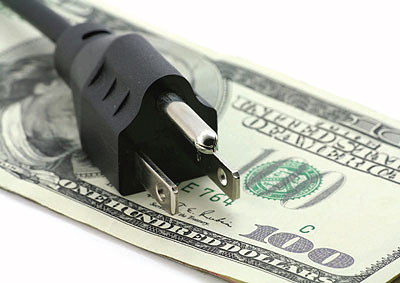By Eileen Dallabrida
Delaware manufacturers are generating savings in utility costs through free energy audits that identify ways to reduce waste and increase productivity.
As part of their work with the Industrial Assessment Centers (IAC), senior engineering students at the University of Delaware (UD) are detectives of sorts, tracking such energy thieves as leaking air compressors, inefficient lighting and electrical surges.
“We average about 15 percent savings in our recommendations, which when compared with the cost of the program to the Department of Energy, results in well over a 100-to-one return on investment,” says Keith Goossen, IAC director.
The items on the audit checklist report an average of about $55,000 in potential annual savings for each manufacturer. Businesses aren’t obligated to act on the IAC’s recommendations.
The program is a collaboration between government, education and businesses, drawing on the resources of the Department of Energy, the Environmental Protection Agency and the Delaware Manufacturing Extension Partnership (DEMEP). UD is one of only 26 universities nationwide to participate in the IAC.
Here’s how it works.
Small and mid-size manufacturers – businesses with fewer than 500 employees and annual energy bills of more than $100,000 but less than $2.5 million – fill out a simple application to determine eligibility. Qualifying manufacturers then submit energy bills and a summary of their operations to the IAC.
Engineering students spend one or two days on site, interviewing key personnel about plant processes. Then they walk through the plant, meticulously gathering data.
“We do measurements and collect equipment plate information,” notes Ralph Nigro, assistant director at IAC. “It’s a very thorough process.”
Recommendations might include installing compressor air intakes in cooler locations, fixing leaky hoses or harnessing waste heat from boilers to preheat air or oil used in machinery.
A water-saving solution could be as simple as choosing a more efficient nozzle for use during wash down. Water used for cooling can be recaptured and repurposed.
“There are lots of cases in which you use that water once and then it goes down the drain,” Nigro says. “But if it’s directed into a cooling tower, it can be reused.”
The Department of Energy requires that the IAC report back to the manufacturer within 60 days with a summary of costs and opportunities for savings, including how long it will take for the business to recoup the costs of updates.
 That’s where DEMEP comes in. Accredited by the National Institute for Standards and Technology, the non-profit organization’s mission is to substantially improve the quality, productivity, and profitability of Delaware manufacturers by identifying, transferring and implementing appropriate best practices.
That’s where DEMEP comes in. Accredited by the National Institute for Standards and Technology, the non-profit organization’s mission is to substantially improve the quality, productivity, and profitability of Delaware manufacturers by identifying, transferring and implementing appropriate best practices.
“We’re helping manufacturers to locate the services and equipment they need to make these changes,” says Steve Quindlen, DEMEP executive director.
To date, 41 manufacturers have taken advantage of the Delaware program.
One of the first to sign on was ILC Dover in Frederica, a maker of flexible soft goods for space suits, lighter-than-air vehicles, pharmaceutical containers and other high-tech offerings.
“Operators work hard to keep a handle on costs but outsiders see things we don’t see,” says Brad Walters, vice president of operations.
IAC recommended that ILC adjust plant thermostats down two degrees in winter and up two degrees in summer for an estimated savings of $15,500 – achieved at no cost to the business. The plant also is in the process of replacing its HVAC system with more energy-efficient units.
The company already was planning to update its lighting. The IAC suggested installing new ballasts that require fewer bulbs.
“Where we had two bulbs, now we have one – and where we had four bulbs, we also have one,” Walters says.
He reports that electrical usage is down 20 percent from two years ago and 10 percent from one year ago.
“We’ve seen benefits that have helped to offset the increase in energy costs,” he says.
Changes in human behavior also generated savings.
“When we leave our offices for a meeting, we turn off the lights,” Walters says. “When we go home at night, we turn off our computers.”
The Speakman Co., a manufacturer of specialty faucets, shower heads and safety eye washers, also was looking for ways to tighten the flow of energy costs.
“We are always open to ways to make our operation more efficient,” says Mark Puzzo, supply chain manager.
Several years ago, Speakman evaluated the three air handlers at its plant in New Castle and determined only the largest unit was required to get the job done.
But the energy audit found that the big unit wasn’t efficient. In fact, one of the smaller units could handle the air more effectively, while consuming less energy.
“We thought we had that issue under control but a fresh set of eyes showed us a better way,” Puzzo says.
Large consumers of electricity are billed at a higher rate during power surges and the audit pinpointed an expensive spike in energy use. Two unrelated activities – running a washer for parts and a packaging machine that heat-seals plastic clamshells – collectively sent the meter spinning.
“Those two pieces of equipment, running at the same time, created a big surge,” Puzzo says. “Now we run them at different times to avoid creating a surge, which is much cheaper.”
UD was named to the IAC in 2006. Founded in 1984, the IAC has evaluated more than 600 plants nationwide and also offers workshops on saving energy.
Nigro notes it’s especially meaningful to the students that their work benefits the environment. The students also gain valuable hands-on experience, as well as an attractive enhancement to their resumes.
“The students we utilize for assessments are performing real parts of the work and learning the craft,” Goossen says. “Generally, about 80 to 90 percent of our graduates go on into the energy field.”

